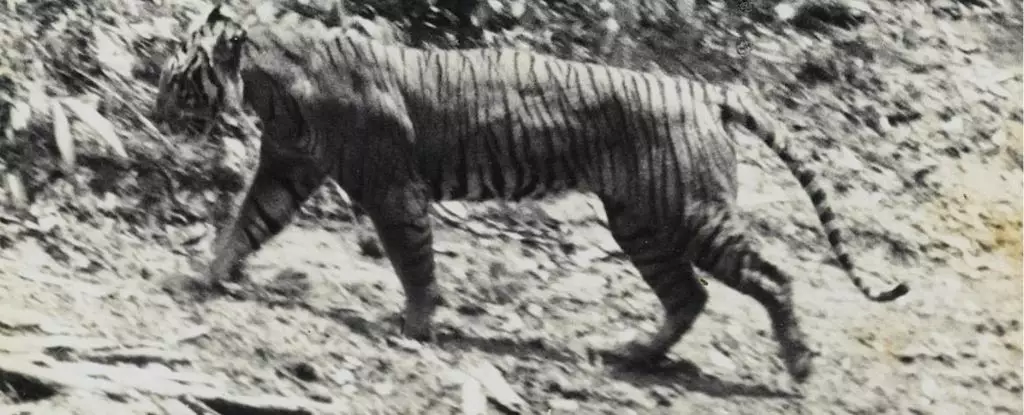The story of the Javan tiger, long believed to be extinct, took an unexpected turn in 2019. After more than a century of being declared non-existent due to relentless hunting and habitat destruction, a glimmer of hope emerged. A local resident and conservationist in West Java claimed to have spotted a tiger outside a village. The subsequent investigation, led by researcher Kalih Raksasewu and government employee Bambang Adryanto, uncovered footprints, claw marks, and a single strand of hair that could have belonged to the elusive creature.
A Genetic Revelation
In March of 2022, the hair sample underwent genetic analysis at Indonesia’s Biology Research Centre for National Research and Innovation (BRIN). The results were compared to the genetics of both Sumatran tigers and a 1930 museum specimen of a Javan tiger. Surprisingly, the mysterious strand of hair displayed a 97 percent similarity to Sumatran tiger genetics and only a 0.3 percent genetic distance from the museum Javan tiger. The researchers concluded that the hair sample belonged to the Javan tiger subspecies.
While the rediscovery of the Javan tiger is a cause for celebration, the population, if still existing, is unlikely to be flourishing. The island of Java, which once teemed with these majestic predators, is now densely populated, with much of the tiger’s natural habitat replaced by agricultural land. Due to the loss of prey sources and the easy availability of livestock, the tigers turned to hunting domestic animals, resulting in them being perceived as pests and ruthlessly exterminated.
The dwindling population of Javan tigers faced a bleak future by the 1970s, with only a small number residing in wildlife reserves and national parks. Despite occasional unverified sightings over the years, the tiger’s survival was hanging by a thread. The recent discovery of tiger hair in West Java supports past alleged encounters, shedding light on the possibility of the species still existing in the wild.
Urgent Conservation Efforts
The habitat loss in Java continues at an alarming rate, with less than 2 percent of the original lowland forests remaining. Without immediate and intensive conservation measures, the biodiversity of the island is at risk of being wiped out entirely. Some experts believe that Java leopards, often mistaken for tigers, play a crucial role in maintaining the ecosystem balance as the last protectors of the diminishing forest.
The rediscovery of the Javan tiger offers a second chance for this critically endangered species to reclaim its place in the wild. While the current situation is dire, with rapid habitat destruction and human encroachment threatening their existence, concerted efforts in conservation, habitat protection, and anti-poaching measures could turn the tide for the Javan tiger. With continued research and field studies, the true status of these elusive creatures can be confirmed, paving the way for a brighter future for one of Indonesia’s most iconic predators.


Leave a Reply